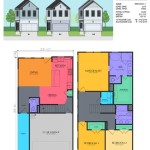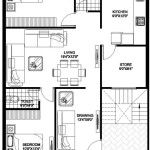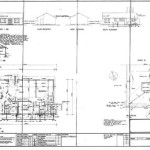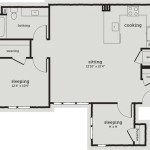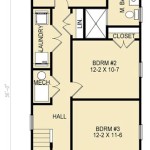Home Theater Room Floor Plan: A Guide to Creating the Ultimate Entertainment Space
Transform your home into a cinematic paradise with a well-designed home theater room. A meticulously planned floor plan is essential to optimize acoustics, seating arrangements, and overall functionality. Here's a comprehensive guide to help you create an immersive and unforgettable home theater experience.
1. Determine Room Dimensions and Shape
The ideal size and shape of your home theater room depend on the number of seats, screen size, and desired viewing experience. For optimal sound quality, consider a rectangular room with a width-to-length ratio of 1.618 (the golden ratio). This shape minimizes standing waves and enhances sound distribution.
2. Position the Seating Area
The seating area should be centered directly in front of the screen, ensuring every viewer has an unobstructed view. Determine the ideal distance between the seats and the screen based on the screen size and image quality. Ensure adequate space around armchairs or sofas for comfortable movement and accessibility.
3. Design the Screen Wall
The screen wall is the focal point of the home theater room. Decide on the screen size that suits your needs and room dimensions. Mount the screen at a height that allows for a comfortable viewing angle. The wall should be a neutral color to minimize light reflections and enhance image sharpness.
4. Optimize Acoustics
Acoustics play a crucial role in creating an immersive sound experience. Consider using sound-absorbing materials such as curtains, carpets, and acoustical panels. Place bass traps in corners to absorb low-frequency noises. Avoid hard surfaces and reflective materials that can cause echoes and reverberations.
5. Plan the Lighting
Proper lighting enhances the viewing experience without distracting from the screen. Dimmable LED lights are ideal as they allow you to adjust the brightness level. Consider using recessed ceiling lights or wall sconces to provide ambient lighting while minimizing glare. Additionally, install blackout curtains to eliminate external light pollution.
6. Integrate Technology
The modern home theater room is a hub for entertainment technology. Integrate a high-quality sound system with surround sound speakers and a subwoofer for an immersive audio experience. Connect a Blu-ray player or streaming device to access your favorite movies and TV shows. Consider adding a smart home system to control lighting, temperature, and audio remotely.
7. Personalize Your Space
Make your home theater room reflect your unique style and preferences. Choose comfortable seating that complements the ambiance. Add artwork, posters, or memorabilia to create a personal touch. Consider installing a mini-fridge or snack bar to enhance the entertainment experience.
Conclusion
Creating a home theater room is an exciting endeavor that requires careful planning and attention to detail. By following these guidelines, you can design a space that delivers an unforgettable entertainment experience. Whether you're a movie buff or a gaming enthusiast, a well-designed home theater room will transform your home into a sanctuary for entertainment.

A Detailed How To On Designing Your Perfect Home Theater

40 Floor Plans For The Ultimate Home Theatre Experience Theater Room Design Rooms

Show Me Your Floor Plan Avs Forum Home Cinema Room Theater Design At

Designing A Home Theater Complete Guide To Build Cinema Room Of Your Own

Home Theater Floor Plan
Designing Building A Home Theater 1 It S Process So You Need To Know What Involved Before Start Blog

How To Plan Your Home Theater Layout Room Size And Seating Considerations Calculating Dimensions

Home Theater Room Layout Guide Rooms Design Small Theaters

Projectorcentral Q A How Do I Calculate Screen Size And Seating Distance For My Home Theater
Shooter Theater Room Project Home Forum And Systems

